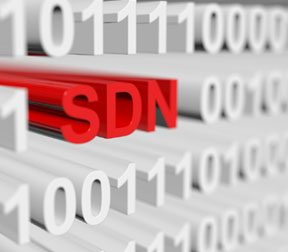SDN principles improve the performance and reliability of branch network links.
 The need to connect countless objects, devices, people and applications is fundamentally changing the way workloads move through the network. Cloud computing, mobile access, federated applications and unified communications are among the services that have significantly increased network traffic and intensified connectivity demands.
The need to connect countless objects, devices, people and applications is fundamentally changing the way workloads move through the network. Cloud computing, mobile access, federated applications and unified communications are among the services that have significantly increased network traffic and intensified connectivity demands.
These demands are particularly acute in organizations with multiple locations and distributed workforces. Remote sites require wide-area network (WAN) connectivity with the performance and reliability to support a full complement of mission-critical services and applications.
Industry analysts say applying the principles of software-defined networking (SDN) to the network edge can bring new levels of reliability and functionality to the WAN. The software-defined WAN (SD-WAN) enables IT organizations to dynamically mix and match connectivity options to optimize traffic, improve application performance and control expenses.
"SD-WAN is a new and transformational way to architect, deploy and operate corporate WANs, as it provides a dramatically simplified way of deploying and managing remote branch office connectivity in a cost-effective manner," Gartner analysts Andrew Lerner and Neil Rickard wrote in their July 2015 technology overview.
Connectivity Choices
SD-WAN allows an organization to blend transport types such as MPLS and broadband to suit their specific needs. While Internet broadband circuits deliver more cost-effective bandwidth than a service provider’s dedicated MPLS connection, MPLS offers more functionality and security, making it ideal for mission-critical and sensitive data.
In a traditional WAN environment, the manual configurations required to differentiate and segment traffic are complex and time-consuming. These configurations need to be updated regularly as application profiles and business needs change, which would require IT to visit each location for every update. As users and organizations demand greater flexibility and agility, and computing continues to shift to mobile and the cloud, the cost and complexity of traditional WAN models are becoming unsustainable.
SD-WAN enables organizations to centrally manage and automate configurations of WAN edge routers. Rather than having a single active network and a backup connection, all connections are active, and traffic routing is automated across a hybrid network that includes public broadband, private MPLS, Internet VPNs and LTE.
Cost Efficiency
SD-WAN reduces costs by making it possible for organizations to rely more upon broadband and less upon more expensive, private MPLS links. SD-WAN is intelligent enough to know when broadband won’t provide an adequate connection and reroutes traffic to MPLS on an “as needed” basis. Complex configurations that were previously manual are automated through the SD-WAN application. IT only has to define and prioritize various types of traffic and routing policies instead of constantly reconfiguring devices. Routing is based upon the current state of the network, providing the flexibility to adapt to changing network conditions.
SD-WAN also provides network functions virtualization, which virtualizes all network services. Rather than requiring IT to manage a number of appliances to provide WAN functions, SD-WAN brings these functions to one device where they can be centrally managed and deployed on demand.
SD-WAN appears to be catching on. A recent IHS Infonectics survey of 150 businesses in North America found that 45 percent intend to increase spending on SD-WAN over the next two years.
"Within the data center, raw speed with support for software-defined networking and virtualized workloads are the top requirements for fabrics,” said Cliff Grossner, IHS research director. “Meanwhile, outside the data center, SDN-led transformation is taking hold in the WAN optimization market. There's a shift from optimizing application traffic flows over a single point-to-point WAN link to automated and dynamic load balancing of application traffic over multiple link types — MPLS, broadband, Internet, cellular, et cetera.”




You must be logged in to post a comment.